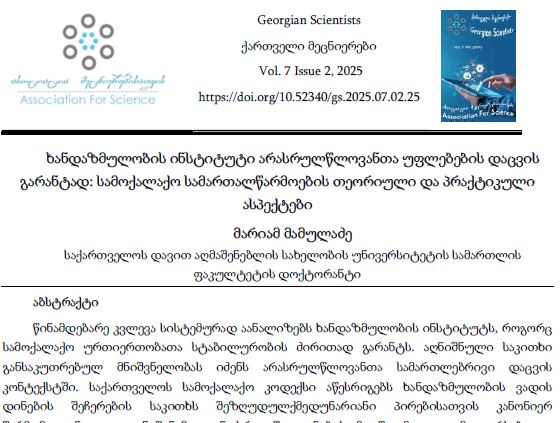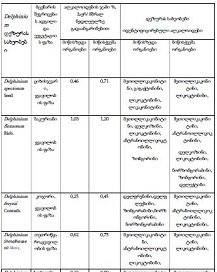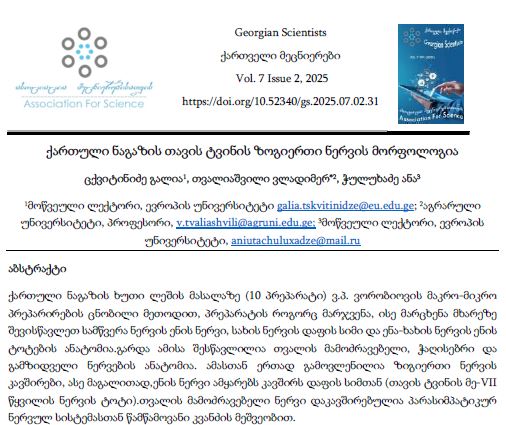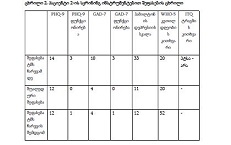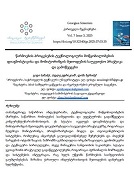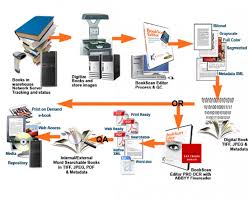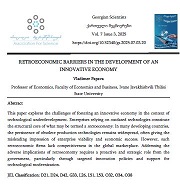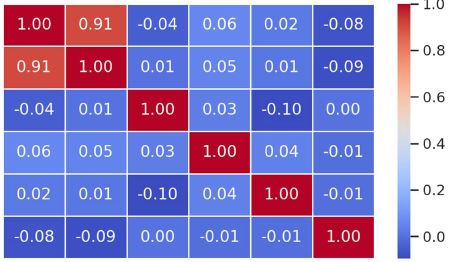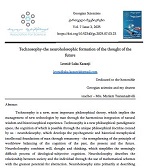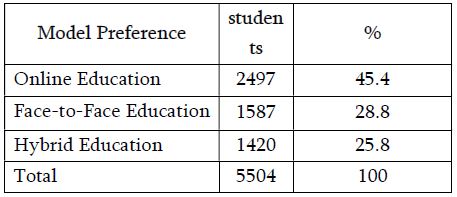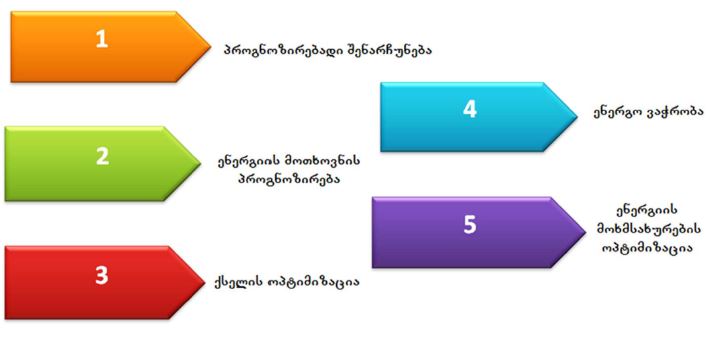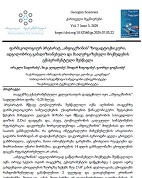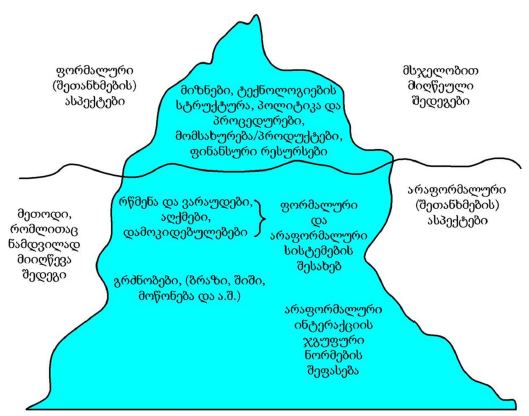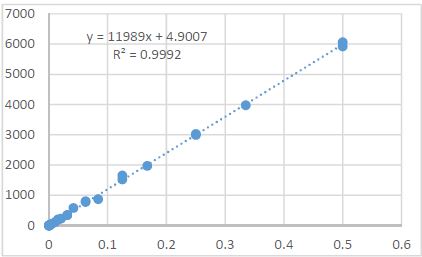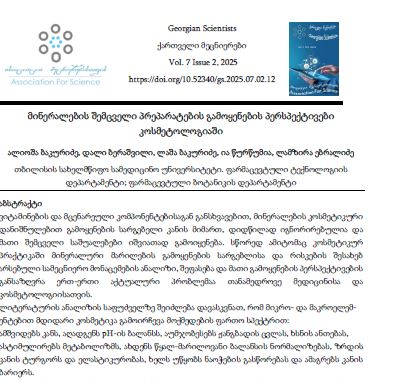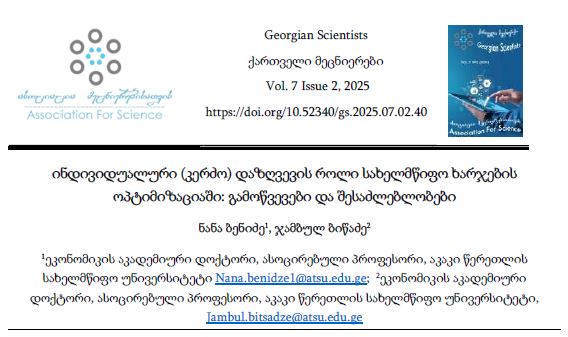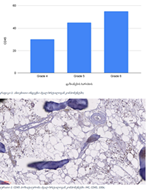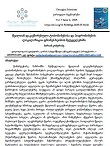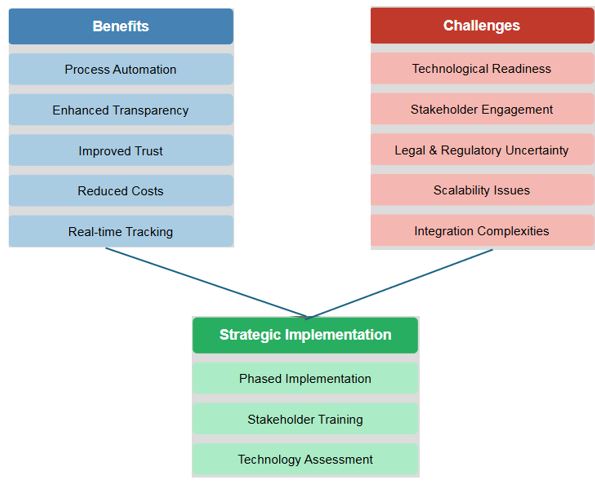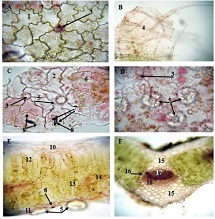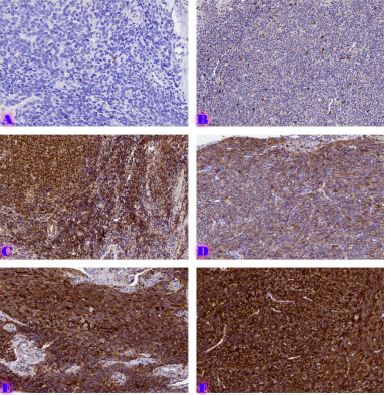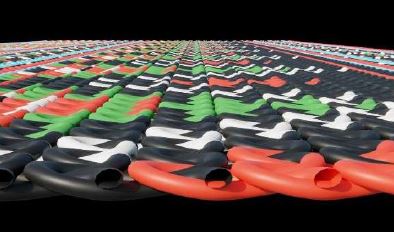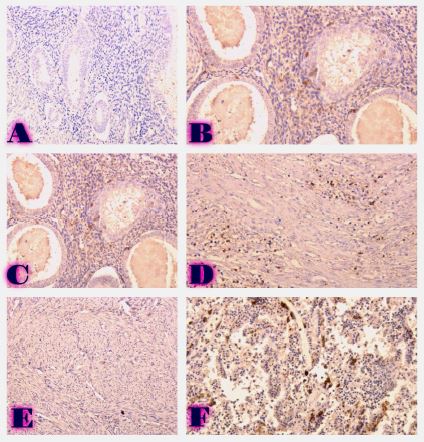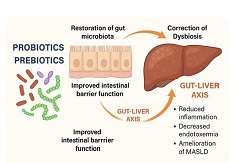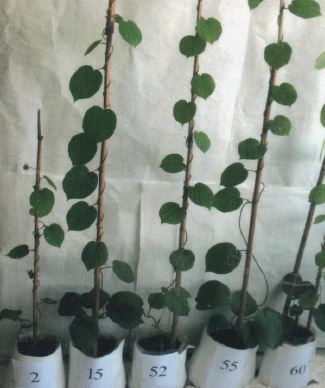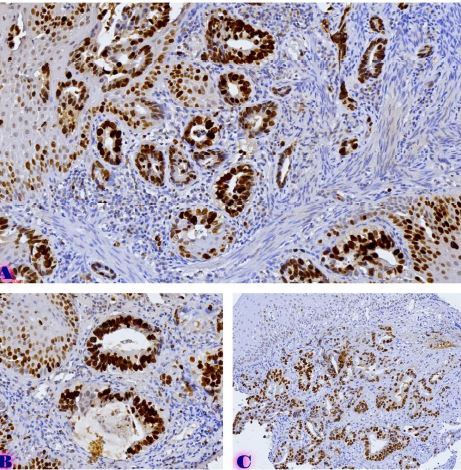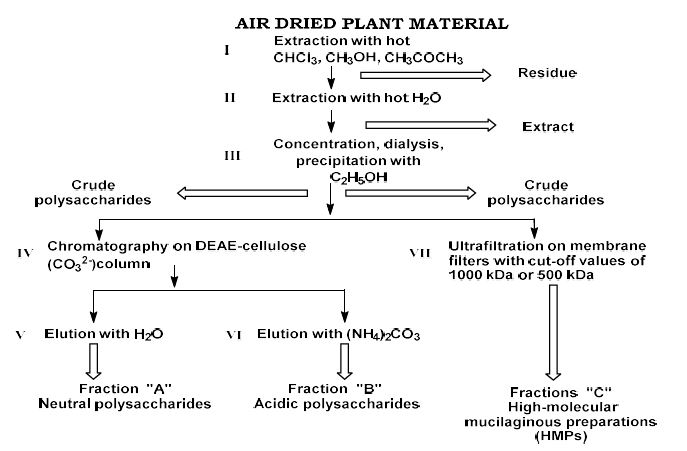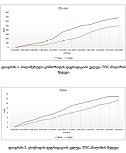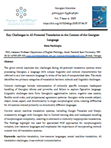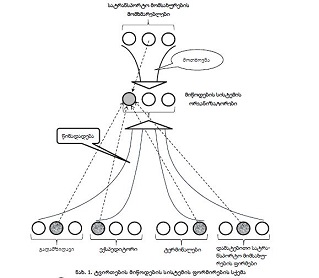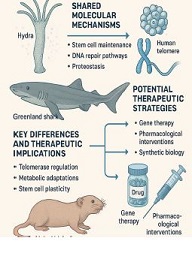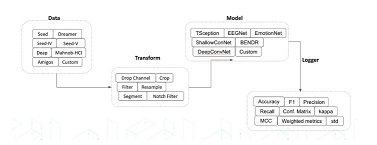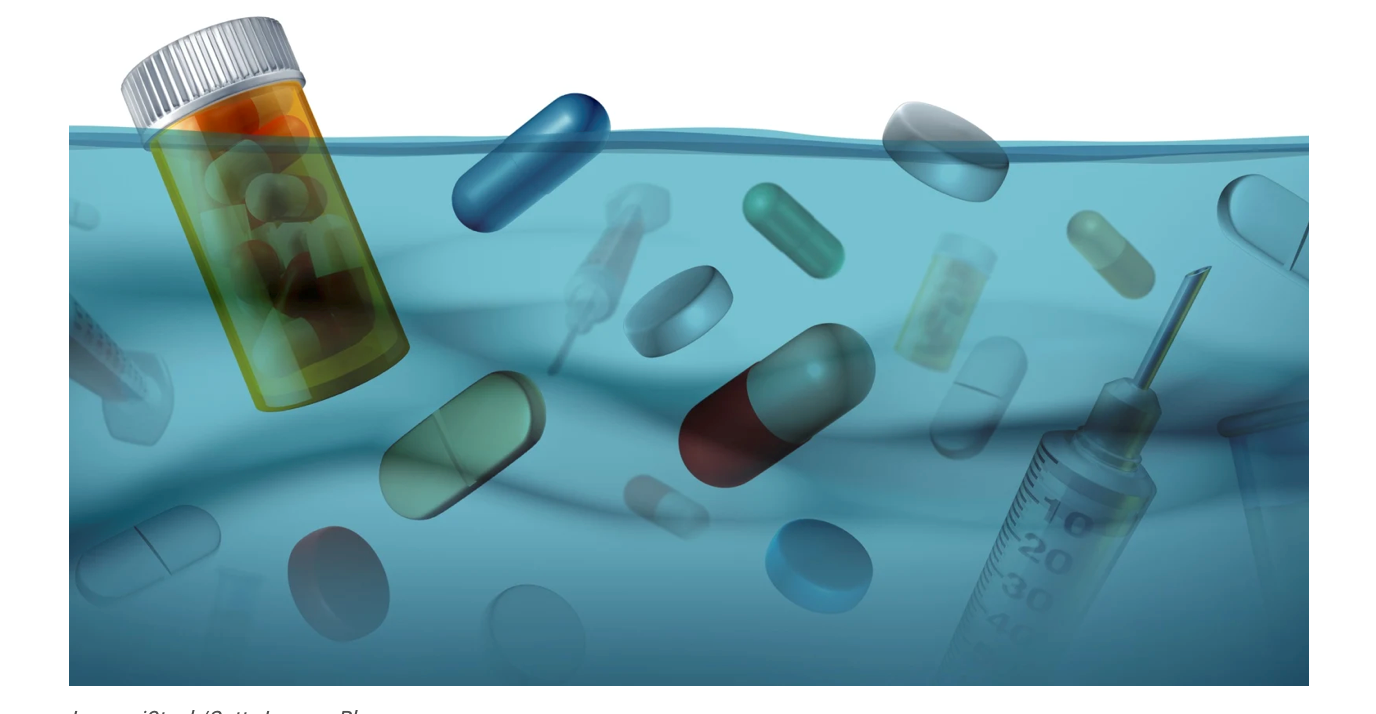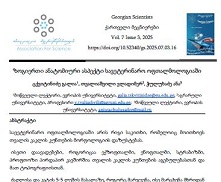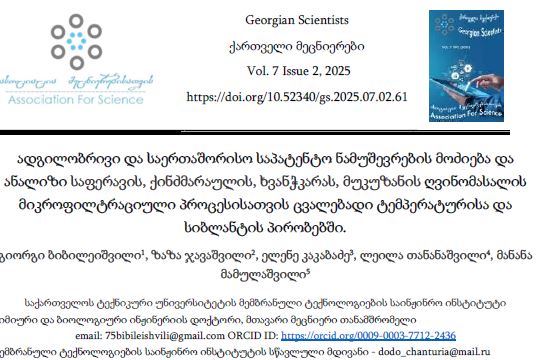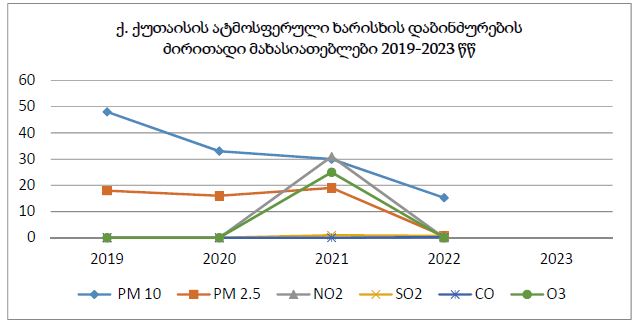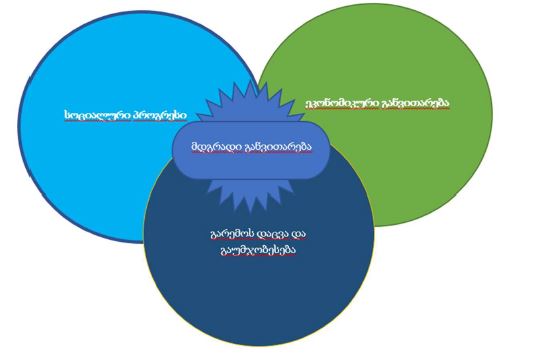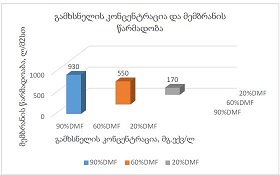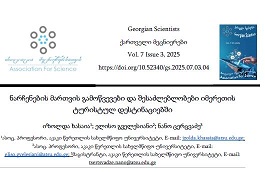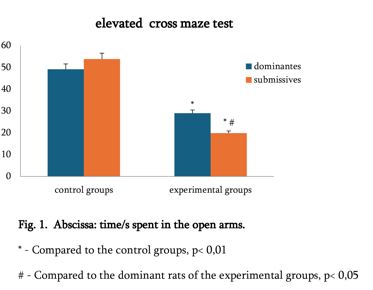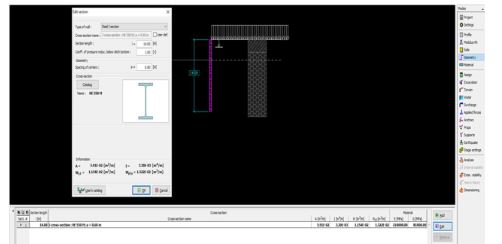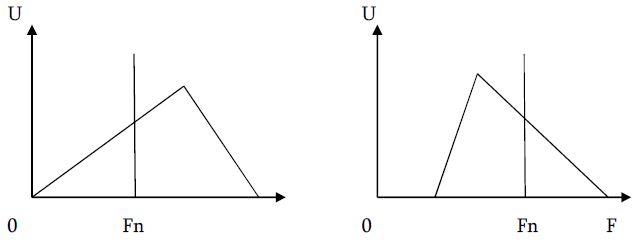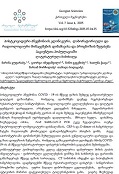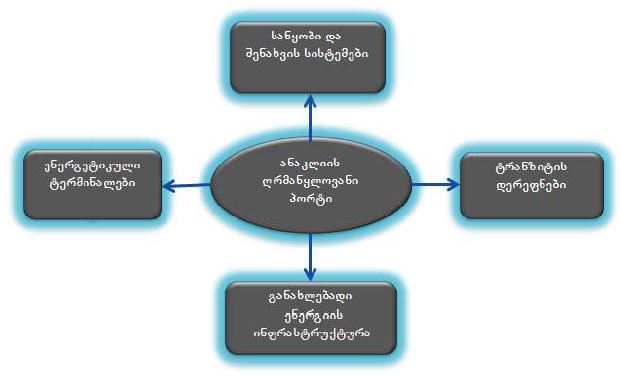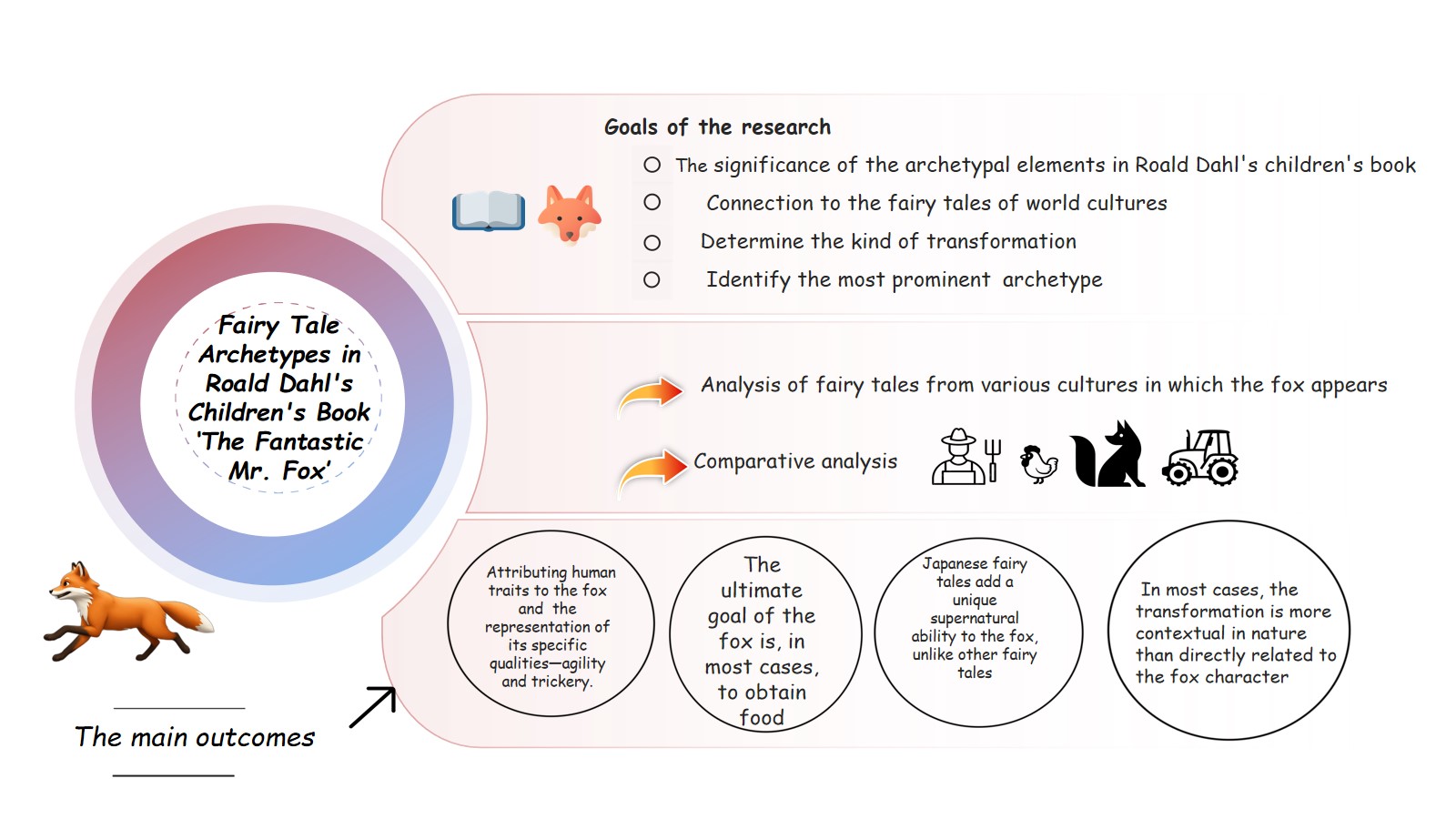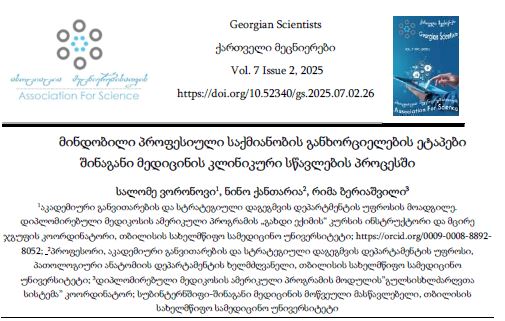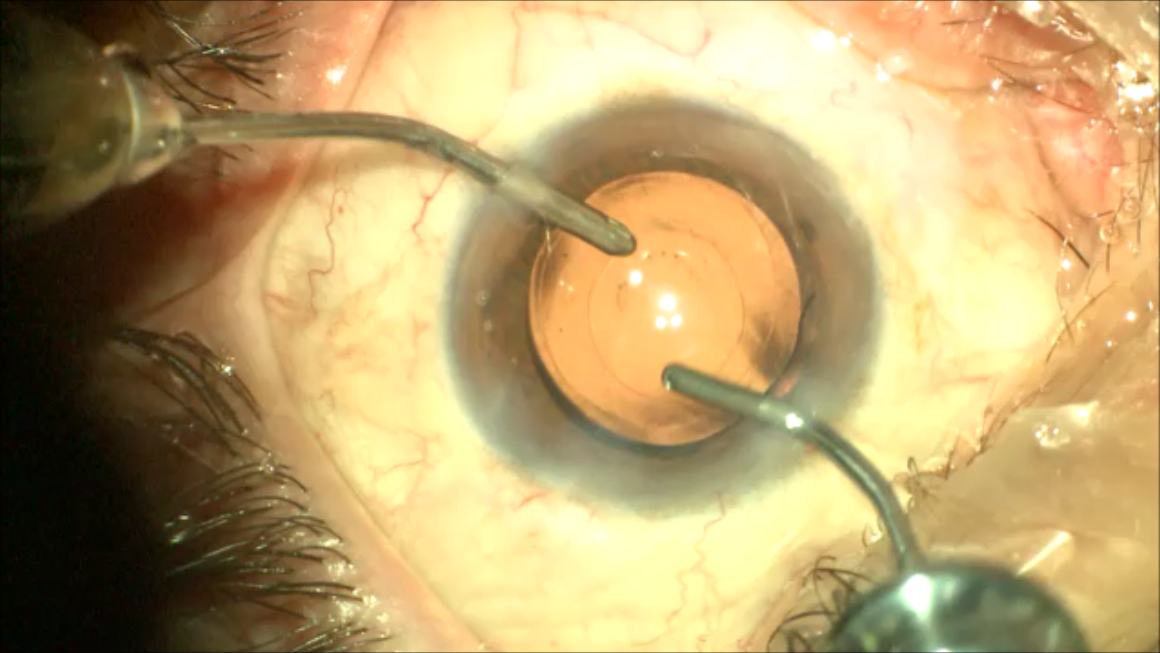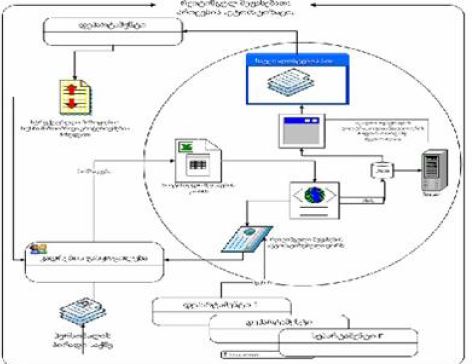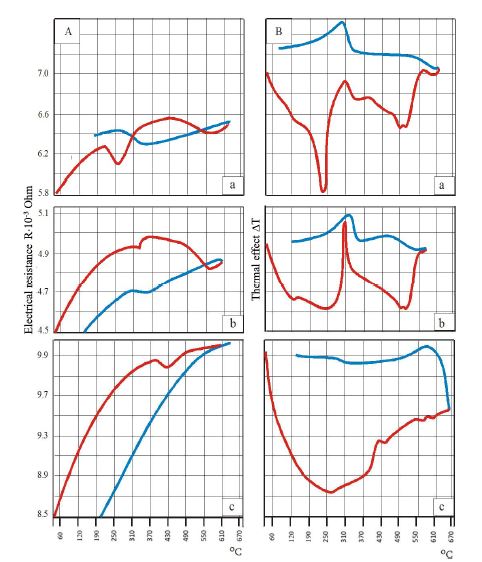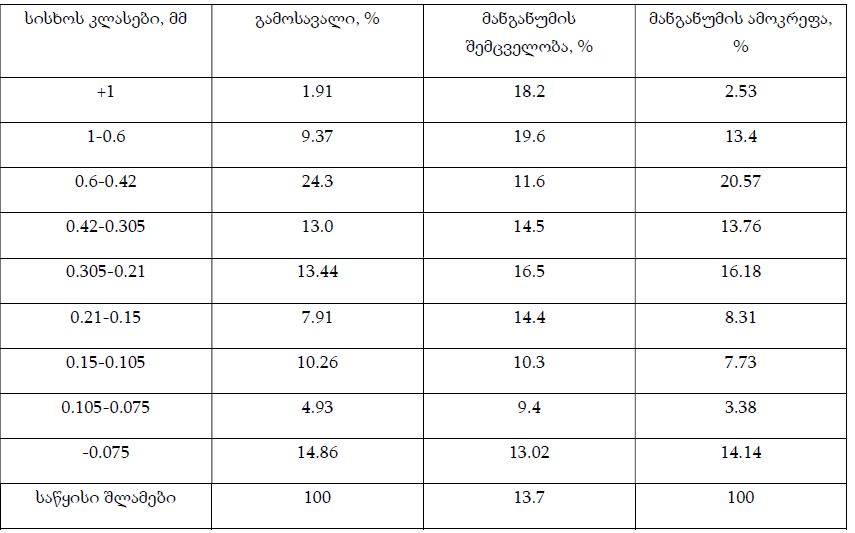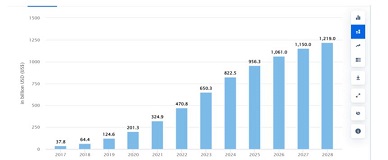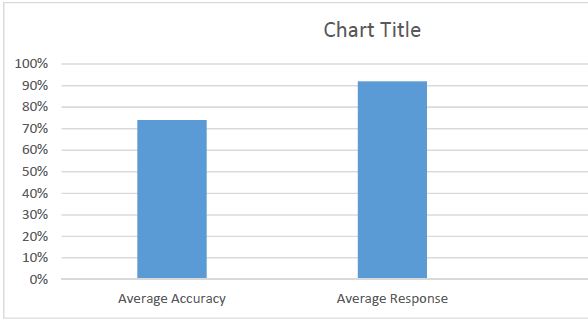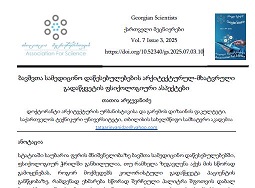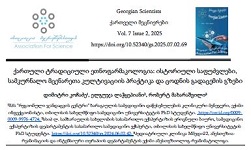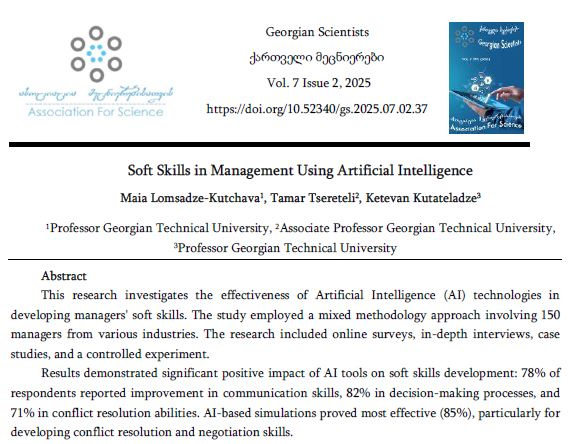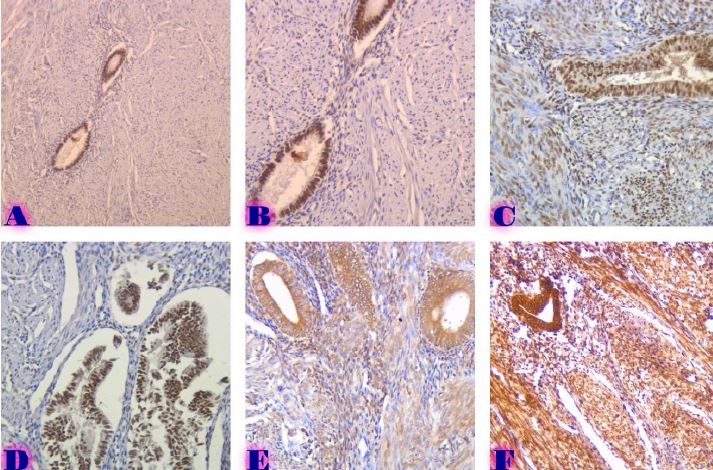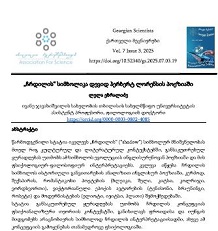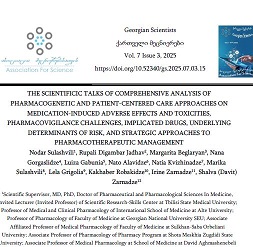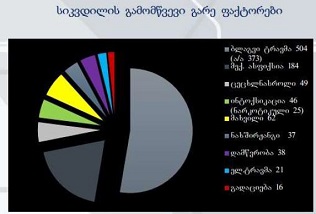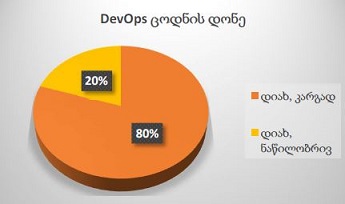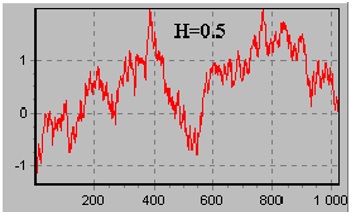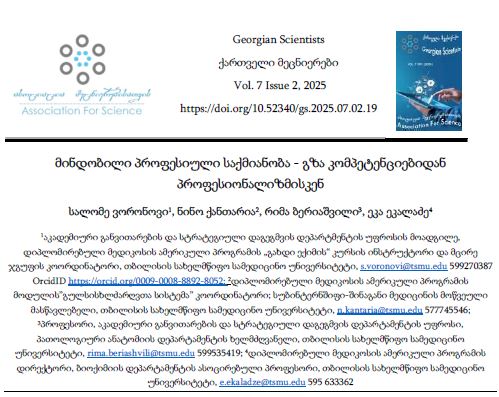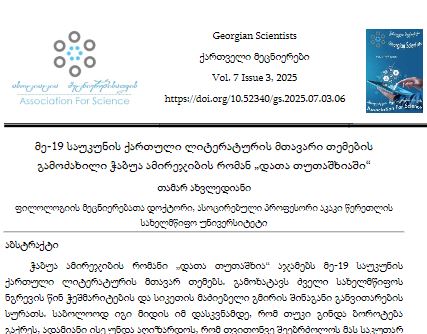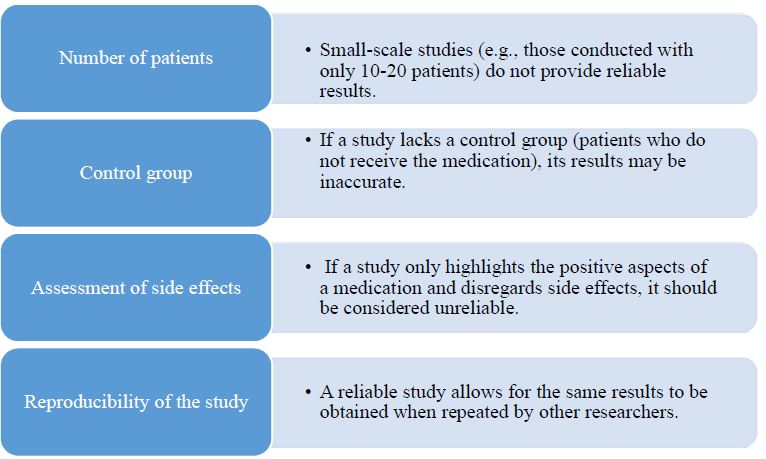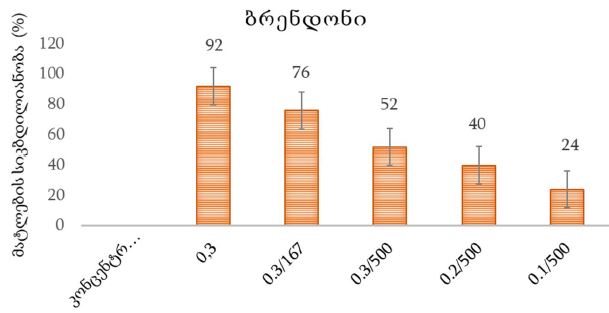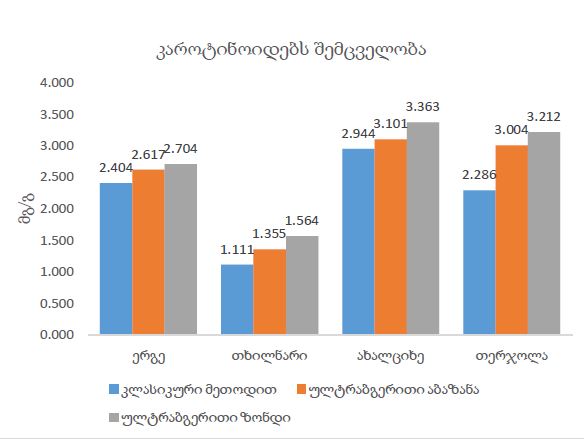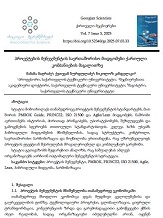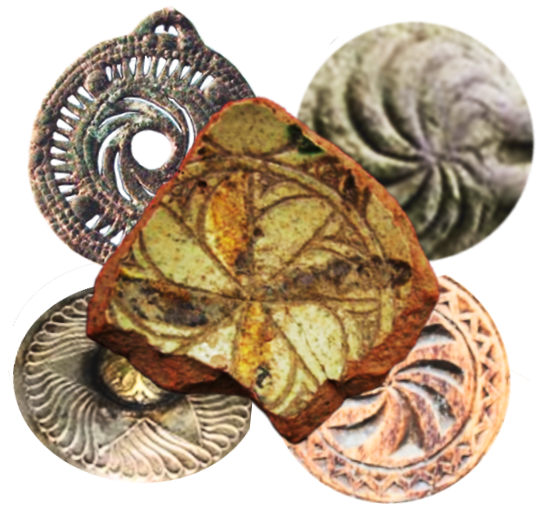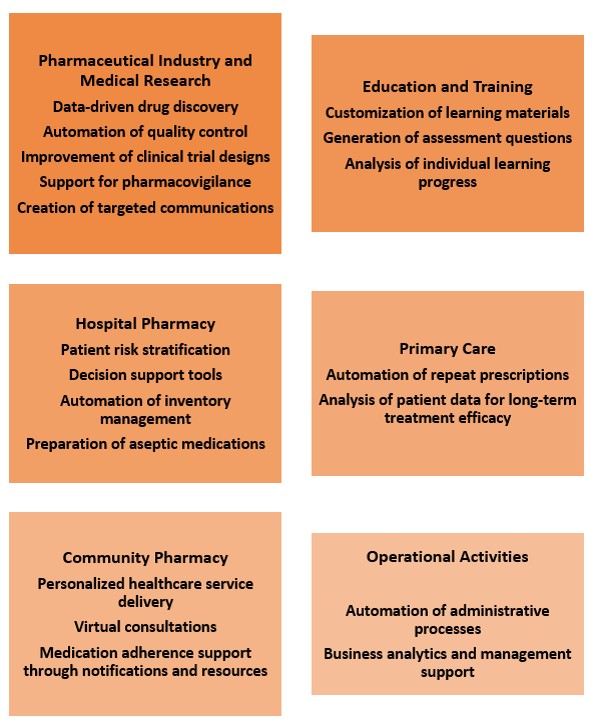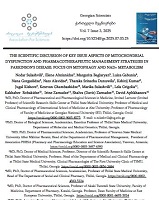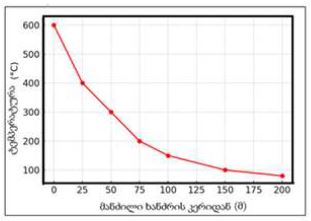CONSUMER VALUE OF SUBTROPICAL PERSIMMON AND PROSPECTS FOR PRODUCTION EXPANSION
Downloads
The article is of a review nature. The morphological characteristics and biochemical indicators of persimmon fruits, and the advantages of the plant concerning other fruits are investigated and presented. Studies show that persimmon has a high nutritional value, but the degree of demand and the scale of production are reduced by the high content of tannic substances (flavonoids). The high content of free flavonoids worsens the taste properties. It should be noted here that flavonoids have a high biological and medicinal value, and their content in persimmon is several times higher than in other fruits. A review analysis has shown that the removal of free flavonoids improves gustatory quality, but decreases medicinal/biological value. The technological processes should be focused not on the removal of flavonoids, but on covering them, taking into account various taste additives. It is recommended to use supplements of dairy products to cover the milk and increase its nutritional and biological value. By simplifying the technology of processing persimmon and improving the taste qualities, it will be possible to increase the degree of demand for persimmon, which in turn will lead to an increase in the scale of production. An efficient technology of persimmon processing and the production of intermediate semi-finished products (concentrates and powders) is recommended, which will increase the duration of the persimmon season.
Downloads
Astha Sharma, Anju K. Dhiman, Surekha Attri, Preethi Ramachandran. Studies on preparation and preservation of persimmon (Diospyros kaki L.) pulp. First published: 05 February 2021. https://doi.org/10.1111/jfpp.15274
Rosa Direito, João Rocha, Bruno Sepodes, Maria Eduardo-Figueira. From Diospyros kaki L. (Persimmon) Phytochemical Profile and Health Impact to New Product. 20 September 2021
https://doi.org/10.3390/nu13093283
Izuchi, R.; Nakai, Y.; Takahashi, H.; Ushiama, S.; Okada, S.; Misaka, T.; Abe, K. Hepatic Gene Expression of the Insulin Signaling Pathway Is Altered by Administration of Persimmon Peel Extract: A DNA Microarray Study Using Type 2 Diabetic Goto-Kakizaki Rats. J. Agric. Food Chem. 2011, 59, 3320–3329. [Google Scholar] [CrossRef]
FAO. Food and Agricultural Organization of the United Nations. 2017. Available online: http://www.fao.org/faostat/en/#data. (accessed on 25 January 2021)
Toplu, C.; Kaplankiran, M.; Demirkeser, T.H.; Ozdemir, A.E.; Candir, E.E.; Yildiz, E. The performance of persimmon (Diospyros kaki Thumb.) Cultivars Under Mediterranean Coastal Conditions in Hatay, Turkey. J. Am. Pomol. Soc. 2009, 63, 33. [Google Scholar]
Giordani, E. Varietal assortment of persimmon in the countries of the Mediterranean area and genetic improvement. In Proceedings of the First Mediterranean Symposium on Persimmon, Faenza, Italy, 23–24 November 2001; pp. 23–37. [Google Scholar]
Gorinstein, S.; Zachwieja, Z.; Folta, M.; Barton, H.; Piotrowicz, J.; Zemser, M.; Weisz, M.; Trakhtenberg, S.; Martin-Belloso, O. Comparative contents of dietary fiber, total phenolics, and minerals in persimmons and apples. J. Agric. Food Chem. 2001, 49, 952–957. [Google Scholar] [CrossRef] [PubMed]
de Ancos, B.; Gonzalez, E.; Cano, M.P. Effect of high-pressure treatment on the carotenoid composition and the radical scavenging activity of persimmon fruit purees. J. Agric. Food Chem. 2000, 48, 3542–3548. [Google Scholar] [CrossRef] [PubMed][Green Version]
Uchida, S.; Ozaki, M.; Akashi, T.; Yamashita, K.; Niwa, M.; Taniyama, K. Effects of (−)-epigallocatechin-3-O-gallate (green tea tannin) on the life span of stroke-prone spontaneously hypertensive rats. Clin. Exp. Pharmacol. Physiol. Suppl. 1995, 22, S302–S303. [Google Scholar] [CrossRef] [PubMed]
Hibino, G.; Nadamoto, T.; Fujisawa, F.; Fushiki, T. Regulation of the peripheral body temperature by foods: A temperature decrease induced by the Japanese persimmon (kaki, Diospyros kaki). Biosci. Biotechnol. Biochem. 2003, 67, 23–28. [Google Scholar] [CrossRef][Green Version]
Gu, H.F.; Li, C.M.; Xu, Y.J.; Hu, W.F.; Chen, M.H.; Wan, Q.H. Structural features and antioxidant activity of tannin from persimmon pulp. Food Res. Int. 2008, 41, 208–217. [Google Scholar] [CrossRef]
Briand, C. The common persimmon (Diospyros virginiana L.): The history of an underutilized fruit tree (16th–19th centuries). Huntia 2005, 12, 71–89. [Google Scholar]
Chen, X.N.; Fan, J.F.; Yue, X.; Wu, X.R.; Li, L.T. Radical scavenging activity and phenolic compounds in persimmon (Diospyros kaki L. cv. Mopan). J. Food Sci. 2008, 73, C24–C28. [Google Scholar] [CrossRef] [PubMed]
Kawase, M.; Motohashi, N.; Satoh, K.; Sakagami, H.; Nakashima, H.; Tani, S.; Shirataki, Y.; Kurihara, T.; Spengler, G.; Wolfard, K.; et al. Biological activity of persimmon (Diospyros kaki) peel extracts. Phytother. Res. 2003, 17, 495–500. [Google Scholar] [CrossRef] [PubMed]
Direito, R.; Lima, A.; Rocha, J.; Ferreira, R.B.; Mota, J.; Rebelo, P.; Fernandes, A.; Pinto, R.; Alves, P.; Bronze, R.; et al. Dyospiros kaki phenolics inhibit colitis and colon cancer cell proliferation, but not gelatinase activities. J. Nutr. Biochem. 2017, 46, 100–108. [Google Scholar] [CrossRef]
Matsumoto, K.; Watanabe, Y.; Ohya, M.A.; Yokoyama, S. Young persimmon fruits prevent the rise in plasma lipids in a diet-induced murine obesity model. Biol. Pharm. Bull. 2006, 29, 2532–2535. [Google Scholar] [CrossRef][Green Version]
Gorinstein, S.; Kulasek, G.W.; Bartnikowska, E.; Leontowicz, M.; Zemser, M.; Morawiec, M.; Trakhtenberg, S. The influence of persimmon peel and persimmon pulp on the lipid metabolism and antioxidant activity of rats fed cholesterol. J. Nutr. Biochem. 1998, 9, 223–227. [Google Scholar] [CrossRef]
Esteban-Muñoz, A.; Sánchez-Hernández, S.; Samaniego-Sánchez, C.; Giménez-Martínez, R.; Olalla-Herrera, M. Differences in the Phenolic Profile by UPLC Coupled to High Resolution Mass Spectrometry and Antioxidant Capacity of Two Diospyros kaki Varieties. Antioxidants 2021, 10, 31. [Google Scholar] [CrossRef]
Lee, S.O.; Chung, S.K.; Lee, I.S. The antidiabetic effect of dietary persimmon (Diospyros kaki L. cv. Sangjudungsi) peel in streptozotocin-induced diabetic rats. J. Food Sci. 2006, 71, S293–S298. [Google Scholar] [CrossRef]
Grygorieva, O.; Kucharska, A.Z.; Piórecki, N.; Klymenko, S.; Vergun, O.; Brindza, J. Antioxidant activities and phenolic compounds in fruits of various genotypes of American persimmon (Diospyros virginiana L.). Acta Sci. Pol. Technol. Aliment 2018, 17, 117–124. [Google Scholar] [PubMed]
Ozen, A.; Colak, A.; Dincer, B.; Guner, S. A diphenolase from persimmon fruits (Diospyros kaki L., Ebenaceae). Food Chem. 2004, 85, 431–437. [Google Scholar] [CrossRef]
Ercisli, S.; Akbulut, M.; Ozdemir, O.; Sengul, M.; Orhan, E. Phenolic and antioxidant diversity among persimmon (Diospyrus kaki L.) genotypes in Turkey. Int. J. Food Sci. Nutr. 2008, 59, 477–482. [Google Scholar] [CrossRef] [PubMed]
Giordani, E.; Doumett, S.; Nin, S.; Del Bubba, M. Selected primary and secondary metabolites in fresh persimmon (Diospyros kaki Thunb.): A review of analytical methods and current knowledge of fruit composition and health benefits. Food Res. Int. 2011, 44, 1752–1767. [Google Scholar] [CrossRef]
Wollgast, J.; Anklam, E. Polyphenols in chocolate: Is there a contribution to human health? Food Res. Intern. 2000, 33, 449–459. [Google Scholar] [CrossRef]
Crozier, A.; Jaganath, I.B.; Clifford, M.N. Dietary phenolics: Chemistry, bioavailability and effects on health. Nat. Prod. Rep. 2009, 26, 1001–1043. [Google Scholar] [CrossRef]
Direito, R.; Rocha, J.; Sepodes, B.; Eduardo-Figueira, M. Phenolic Compounds Impact on Rheumatoid Arthritis, Inflammatory Bowel Disease and Microbiota Modulation. Pharmaceutics 2021, 13, 145. [Google Scholar] [CrossRef] [PubMed]
Gorinstein, S.; Zemser, M.; Weisz, M.; Halevy, S.; Deutsch, J.; Tilus, K.; Feintuch, D.; Guerra, N.; Fishman, M.; Bartnikowska, E. Fluorometric analysis of phenolics in persimmons. Biosci. Biotech. Biochem. 1994, 58, 1087–1092. [Google Scholar] [CrossRef][Green Version]
Rahman, I.; Biswas, S.K.; Kirkham, P.A. Regulation of inflammation and redox signaling by dietary polyphenols. Biochem. Pharmacol. 2006, 72, 1439–1452. [Google Scholar] [CrossRef] [PubMed]
Chen, X.N.; Fan, J.F.; Yue, X.; Wu, X.R.; Li, L.T. Radical scavenging activity and phenolic compounds in persimmon (Diospyros kaki L. cv. Mopan). J. Food Sci. 2008, 73, C24–C28. [Google Scholar] [CrossRef] [PubMed]
Gorinstein, S.; Zachwieja, Z.; Folta, M.; Barton, H.; Piotrowicz, J.; Zemser, M.; Weisz, M.; Trakhtenberg, S.; Martin-Belloso, O. Comparative contents of dietary fiber, total phenolics, and minerals in persimmons and apples. J. Agric. Food Chem. 2001, 49, 952–957. [Google Scholar] [CrossRef] [PubMed]
Taira, S. Astringency in persimmon. In Fruit Analysis; Springer: Berlin/Heidelberg, Germany, 1995; pp. 97–110. [Google Scholar]
Akagi, T.; Suzuki, Y.; Ikegami, A.; Kamitakahara, H.; Takano, T.; Nakatsubo, F.; Yonemori, K. Condensed Tannin Composition Analysis in Persimmon (Diospyros kaki Thunb.) Fruit by Acid Catalysis in the Presence of Excess Phloroglucinol. J. Jpn. Soc. Hortic. Sci. 2010, 79, 275–281. [Google Scholar] [CrossRef][Green Version]
Pei, X.; Zhang, Q.; Guo, D.; Luo, Z. Effectiveness of the RO2 marker for the identification of non-astringency trait in Chinese PCNA persimmon and its possible segregation ratio in hybrid F1 population. Sci. Hortic. 2013, 150, 227–231. [Google Scholar] [CrossRef]
Yaqub, S.; Farooq, U.; Shafi, A.; Akram, K.; Murtaza, M.A.; Kausar, T.; Siddique, F. Chemistry and Functionality of Bioactive Compounds Present in Persimmon. J. Chem. 2016, 2016, 1–13. [Google Scholar] [CrossRef][Green Version]
Nordberg, J.; Arner, E.S. Reactive oxygen species, antioxidants, and the mammalian thioredoxin system. Free. Radic. Biol. Med. 2001, 31, 1287–1312. [Google Scholar] [CrossRef]
Daood, H.G.; Biacs, P.; Czinkotai, B.; Hoschke, A. Chromatographic Investigation of Carotenoids, Sugars and Organic-Acids from Diospyros-Kaki Fruits. Food Chem. 1992, 45, 151–155. [Google Scholar] [CrossRef]
Gu, H.F.; Li, C.M.; Xu, Y.J.; Hu, W.F.; Chen, M.H.; Wan, Q.H. Structural features and antioxidant activity of tannin from persimmon pulp. Food Res. Int. 2008, 41, 208–217. [Google Scholar] [CrossRef]
Suzuki, T.; Someya, S.; Hu, F.; Tanokura, M. Comparative study of catechin compositions in five Japanese persimmons (Diospyros kaki). Food Chem. 2005, 93, 149–152. [Google Scholar] [CrossRef]
Uchida, S.; Ohta, H.; Niwa, M.; Mori, A.; Nonaka, G.; Nishioka, I.; Ozaki, M. Prolongation of life span of stroke-prone spontaneously hypertensive rats (SHRSP) ingesting persimmon tannin. Chem. Pharm. Bull. 1990, 38, 1049–1052. [Google Scholar] [CrossRef] [PubMed][Green Version]
Jung, S.T.; Park, Y.S.; Zachwieja, Z.; Folta, M.; Barton, H.; Piotrowicz, J.; Katrich, E.; Trakhtenberg, S.; Gorinstein, S. Some essential phytochemicals and the antioxidant potential in fresh and dried persimmon. Int. J. Food Sci. Nutr. 2005, 56, 105–113. [Google Scholar] [CrossRef] [PubMed]
Park, Y.; Leontowicz, H.; Leontowicz, M.; Namiesnik, J.; Jesion, I.; Gorinstein, S. Nutraceutical value of persimmon (Diospyros kaki Thunb.) and its influence on some indices of atherosclerosis in an experiment on rats fed cholesterol-containing diet. Adv. Hortic. Sci. 2008, 22, 250–254. [Google Scholar]
Direito, R.; Lima, A.; Rocha, J.; Ferreira, R.B.; Mota, J.; Rebelo, P.; Fernandes, A.; Pinto, R.; Alves, P.; Bronze, R.; et al. Dyospiros kaki phenolics inhibit colitis and colon cancer cell proliferation, but not gelatinase activities. J. Nutr. Biochem. 2017, 46, 100–108. [Google Scholar] [CrossRef]
Gorinstein, S.; Kulasek, G.W.; Bartnikowska, E.; Leontowicz, M.; Zemser, M.; Morawiec, M.; Trakhtenberg, S. The influence of persimmon peel and persimmon pulp on the lipid metabolism and antioxidant activity of rats fed cholesterol. J. Nutr. Biochem. 1998, 9, 223–227. [Google Scholar] [CrossRef]
Giordani, E.; Doumett, S.; Nin, S.; Del Bubba, M. Selected primary and secondary metabolites in fresh persimmon (Diospyros kaki Thunb.): A review of analytical methods and current knowledge of fruit composition and health benefits. Food Res. Int. 2011, 44, 1752–1767. [Google Scholar] [CrossRef]
Yoshimura, M.; Mochizuki, A.; Amakura, Y. Identification of Phenolic Constituents and Inhibitory Activity of Persimmon Calyx and Shiteito against Tumor Cell Proliferation. Chem. Pharm. Bull. 2021, 69, 32–39. [Google Scholar] [CrossRef] [PubMed]
Guler, M.C.; Tanyeli, A.; Eraslan, E.; Bozhuyuk, M.R.; Akdemir, F.N.E.; Toktay, E.; Kurt, N.; Guven, E.C.; Ozkan, G. Persimmon (Diospyros Kaki Alleviates Ethanol-Induced Gastric Ulcer in Rats/Persimmon (Diospyros Kaki L.) Sicanlarda Etanol ile induklenen Mide Ulserini Hafifletir. South. Clin. Istanb. Eurasia (SCIE) 2021, 32, 1–8. [Google Scholar]
Rauf, A.; Imran, M.; Abu-Izneid, T.; Iahtisham Ul, H.; Patel, S.; Pan, X.; Naz, S.; Sanches Silva, A.; Saeed, F.; Rasul Suleria, H.A. Proanthocyanidins: A comprehensive review. Biomed. Pharmacother. 2019, 116, 108999. [Google Scholar] [CrossRef] [PubMed]
Lucas-González, R.; Viuda-Martos, M.; Pérez Álvarez, J.A.; Fernández-López, J. Changes in bioaccessibility, polyphenol profile and antioxidant potential of flours obtained from persimmon fruit (Diospyros kaki) co-products during in vitro gastrointestinal digestion. Food Chem. 2018, 256, 252–258. [Google Scholar] [CrossRef] [PubMed]
Han, L.; Qi, S.; Lu, Z.; Li, L. Effects of immature persimmon (Diospyros kaki linn. F.) juice on the pasting, textural, sensory and color properties of rice noodles. J. Texture Stud. 2012, 43, 187–194. [Google Scholar] [CrossRef]
Abbas, H.; Zaky, W.; Hassan, L.; Shahein, N.; Mohamed, A.; Samy, N.; Farahat, E. Impact of Kaki (Diospyros kaki) juice on the rheological, sensory and color properties of spreadable processed cheese analogue. J. Biol. Sci. 2019, 19, 231–236. [Google Scholar] [CrossRef][Green Version]
Arslan, S.; Bayrakci, S. Physicochemical, functional, and sensory properties of yogurts containing persimmon. Turk. J. Agric. For. 2016, 40, 68–74. [Google Scholar] [CrossRef]
Abdallah, D.A.; El-Mageed, A.; Siliha, H.; Rabie, M. Physicochemical Characteristics of Persimmon Puree and its utilization in cupcake. Zagazig J. Agric. Res. 2017, 44, 2629–2640. [Google Scholar]
Qerib Hafizov, Aleksandr Sapozhnikov, Anastasiya Kopylova. Processing persimmon fruits into a drink: Increasing of astringency and method of its elimination. Conference: International conference ASE-I – 2021. Applied science end Enginering. DOI:10.1063/5.0075713
Masood Sadiq Butt , M Tauseef Sultan , Mahwish Aziz , Ambreen Naz , Waqas Ahmed , Naresh Kumar , Muhammad Imran. Persimmon (Diospyros kaki) fruit: hidden phytochemicals and health claims. PMID: 27047315. PMCID: PMC4817420. DOI: 10.17179/excli2015-159
Sepideh Hosseininejad, Cristina M. Gonzalez, Isabel Hernando. Valorization of Persimmon Fruit Through the Development of New Food Products. Department of Food Science and Technology, Universitat Politècnica de València, Valencia, Spain. Front. Food. Sci. Technol., 29 June 2022. Sec. Food Characterization. Volume 2 - 2022 | https://doi.org/10.3389/frfst.2022.914952.
González, C. M., Hernando, I., and Moraga, G. (2021d). In Vitro and In Vivo Digestion of Persimmon and Derived Products : A Review. Foods 10, 1–15. doi:10.3390/foods10123083.
González, C. M., Gil, R., Moraga, G., and Salvador, A. (2021b). Natural Drying of Astringent and Non-astringent Persimmon "Rojo Brillante". Drying Kinetics and Physico-Chemical Properties. Foods 10, 647–712. doi:10.3390/foods10030647. CrossRef Full Text | Google Scholar.
González, C. M., Hernando, I., and Moraga, G. (2021d). In Vitro and In Vivo Digestion of Persimmon and Derived Products : A Review. Foods 10, 1–15. doi:10.3390/foods10123083. CrossRef Full Text | Google Scholar.
González, C. M., Hernando, I., and Moraga, G. (2021c). Influence of Ripening Stage and De‐astringency Treatment on the Production of Dehydrated Persimmon Snacks. J. Sci. Food Agric. 101, 603–612.doi:10.1002/jsfa.10672. CrossRef Full Text | Google Scholar .
Gea-Botella, S., Agulló, L., Martí, N., Martínez-Madrid, M. C., Lizama, V., Martín-Bermudo, F., et al. (2021). Carotenoids from Persimmon Juice Processing. Food Res. Int. 141, 109882. doi:10.1016/j.foodres.2020.109882.
Johnston, R. (2016). “Arsenic and the 2030 Agenda for Sustainable Development,” in Proceedings of the Sixth International Congress on Arsenic in the Environment (As2016), June 19-23, 2016 (Stockholm, Sweden: CRC Press), 12–14. doi:10.1201/b20466-7.
Masahiko, Y., Giordani, E., and Yonemori, K. (2012). “Persimmon,” in Fruit Breeding (New York: Springer), 663–693. doi:10.1007/978-1-4419-0763-9_11. CrossRef Full Text | Google Scholar.
Lucas‐González, R., Pellegrini, M., Viuda‐Martos, M., Pérez‐Álvarez, J. Á., and Fernández‐López, J. (2019). Persimmon ( Diospyros Kaki Thunb.) Coproducts as a New Ingredient in Pork Liver Pâté: Influence on Quality Properties. Int. J. Food Sci. Technol. 54, 1232–1239.doi:10.1111/ijfs.14047.CrossRef Full Text | Google Scholar.
Lucas-González, R., Ángel Pérez-Álvarez, J., Moscaritolo, S., Fernández-López, J., Sacchetti, G., and Viuda-Martos, M. (2021). Evaluation of Polyphenol Bioaccessibility and Kinetic of Starch Digestion of Spaghetti with Persimmon (Dyospyros Kaki) Flours Coproducts during In Vitro Gastrointestinal Digestion. Food Chem. 338, 128142. doi:10.1016/j.foodchem.2020.128142. PubMed Abstract | CrossRef Full Text | Google Scholar.
Lucas-González, R., Viuda-Martos, M., Pérez Álvarez, J. A., and Fernández-López, J. (2018). Changes in Bioaccessibility, Polyphenol Profile and Antioxidant Potential of Flours Obtained from Persimmon Fruit (Diospyros Kaki) Co-products during In Vitro Gastrointestinal Digestion. Food Chem. 256, 252–258. doi:10.1016/j.foodchem.2018.02.128. PubMed Abstract | CrossRef Full Text | Google Scholar
Karaman, S., Toker, Ö. S., Yüksel, F., Çam, M., Kayacier, A., and Dogan, M. (2014). Physicochemical, Bioactive, and Sensory Properties of Persimmon-Based Ice Cream: Technique for Order Preference by Similarity to Ideal Solution to Determine Optimum Concentration. J. Dairy Sci. 97, 97–110. doi:10.3168/jds.2013-7111. PubMed Abstract | CrossRef Full Text | Google Scholar
Hernández-Carrión, M., Varela, P., Hernando, I., Fiszman, S. M., and Quiles, A. (2015). Persimmon Milkshakes with Enhanced Functionality: Understanding Consumers' Perception of the Concept and Sensory Experience of a Functional Food. LWT - Food Sci. Technol. 62, 384–392. doi:10.1016/j.lwt.2014.10.063. CrossRef Full Text | Google Scholar.
Moon, Y.-J., and Cha, Y.-S. (2008). Effects of Persimmon-Vinegar on Lipid Metabolism and Alcohol Clearance in Chronic Alcohol-Fed Rats. J. Med. Food 11, 38–45. doi:10.1089/jmf.2007.071. PubMed Abstract | CrossRef Full Text | Google Scholar.
Liu, M., Yang, K., Qi, Y., Zhang, J., Fan, M., and Wei, X. (2018). Fermentation Temperature and the Phenolic and Aroma Profile of Persimmon Wine. J. Inst. Brew. 124, 269–275. doi:10.1002/jib.497. CrossRef Full Text | Google Scholar
González, C. M., Llorca, E., Quiles, A., Hernando, I., and Moraga, G. (2020). Water Sorption and Glass Transition in Freeze-Dried Persimmon Slices. Effect on Physical Properties and Bioactive Compounds. Lwt 130, 109633. doi:10.1016/j.lwt.2020.109633. CrossRef Full Text | Google Scholar.
Orak, H., Aktas, T., Yagar, H., İsbilir, S. S., Ekinci, N., and Sahin, F. H. (2012). Effects of Hot Air and Freeze Drying Methods on Antioxidant Activity, Colour and Some Nutritional Characteristics of Strawberry Tree (Arbutus Unedo L) Fruit. Food Sci. Technol. Int. 18, 391–402. doi:10.1177/1082013211428213. PubMed Abstract | CrossRef Full Text | Google Scholar.
González, C. M., Llorca, E., Quiles, A., Hernando, I., and Moraga, G. (2022). An In Vitro Digestion Study of Tannins and Antioxidant Activity Affected by Drying "Rojo Brillante" Persimmon. Lwt 155, 112961. doi:10.1016/j.lwt.2021.112961. CrossRef Full Text | Google Scholar.
Sawabe, A.; Ohnishi, N.; Yoshioka, S.; Kusudo, K.; Kanno, K.; Watanabe, Y. Functional Ingredients and Food Preservative in Immature Persimmon “Tekka-Kaki”. Processes 2021, 9, 1989. https://doi.org/10.3390/pr9111989.
Tanaka, T. Chemical Studies on Plant Polyphenols and Formation of Black Tea Polyphenols. Yakugaku Zasshi J. Pharm. Soc. Jpn. 2008, 128, 1119–1131. [Google Scholar] [CrossRef] [PubMed][Green Version]
Ichihashi, M.; Yagi, M.; Nomoto, K.; Yonei, Y. Glycation Stress and Photo-Aging in Skin. Anti-Aging Med. 2011, 8, 23–29. [Google Scholar] [CrossRef][Green Version]
Nizharadze A.N. Fruits of Georgia and their industrial use. Publishing house "Food industry". monograph into Russian, 1971. 190st.
Нижарадзе А.Н. Плоди Грузии и их промышленное использование. Изд «Пищевая промышленность». монография на русский язык1971. 190ст.
Industrial use of subtropical persimmon crop. A.N. Nizharadze, G.M. Fishman. monograph into Russian, Ed. GruzNIIPPA, v.1. Tbilisi 1965.
Промышленное использование урожая субтропической хурмы. А.Н.Нижарадзе, Г.М.Фишман. Изд. ГрузНИИППА, т.1. Тбилиси 1965.
Chemical and technological research on the processing of subtropical persimmon fruits for jam, jam, jelly and candied fruits. monograph into Russian. Proceedings of the GruzNIIPP. T.2. M.: "Pishchepromizdat", 1966.
Химико-технологическое исследования по переработке плодов субтропической хурмы на варенье, джем, желе и цукаты. Труды ГрузНИИППа. Т.2. М.:»Пищепромиздат», 1966.
Patent U690. National Center of Intellectual Property "Sakpatenti". Production method of subtropical persimmon concentrate. A. Tsintskiladze, G. Fishman, D. Abuladze. 31.01. 1994
A. Tsintskiladze, N. Kutaladze, D. Abuladze Production of products with radioprotective properties from subtropical persimmon. Akaki Tsereteli State University. Proceedings of the international scientific-practical conference: "Modern science and innovative practice". ISBN978-9941-484-6. Volume 2. p118-121. 2018
For the question of using subtropical persimmons. A. Tsintkiladze, O. Mikeladze, M. Ardzenadze. "Moambe" of the Agricultural Academy of Georgia, No. 12, pp. 173-179. 2004.
A. Tsintskiladze, M. Ardzenadze, D. Abuladze, N. Kutaladze. Subtropical persimmon polyphenols and their effect on consumer value of products. Akaki Tsereteli State University. 6th International Scientific-Practical Internet-Conference: "Problems of Biosafe Food Products and Business Environment" Collection of Papers. p. 81-85. 2016.
Patent P2148. National Center of Intellectual Property "Sakpatenti". Method of production of cool drinks. A. Tsintskiladze, G. Fishman, M. Ardzenadze, D. Abuladze. 28.10. 1997
Patent of the Russian Federation No. 2057450 for an invention. Concentrated milk product for baby food. Bednykh B.S., Surkova N.G., Antipova T.A., Ladodo K.S., Tsintskiladze A.D., Ardzenadze M.D. 04/10/1996
National Statistics Offise of Georgia. Agriculture of Georgia 2021. Statistical Publicatio. Tbilisi 2022.
Web page: http://www.geostat.ge
Agrotechnology of cultivation and maintenance of oriental persimmon. Scientific and research center of agriculture of Georgia. Tbilisi. 2018. www. Srca.gov.ge

This work is licensed under a Creative Commons Attribution-NonCommercial-NoDerivatives 4.0 International License.





